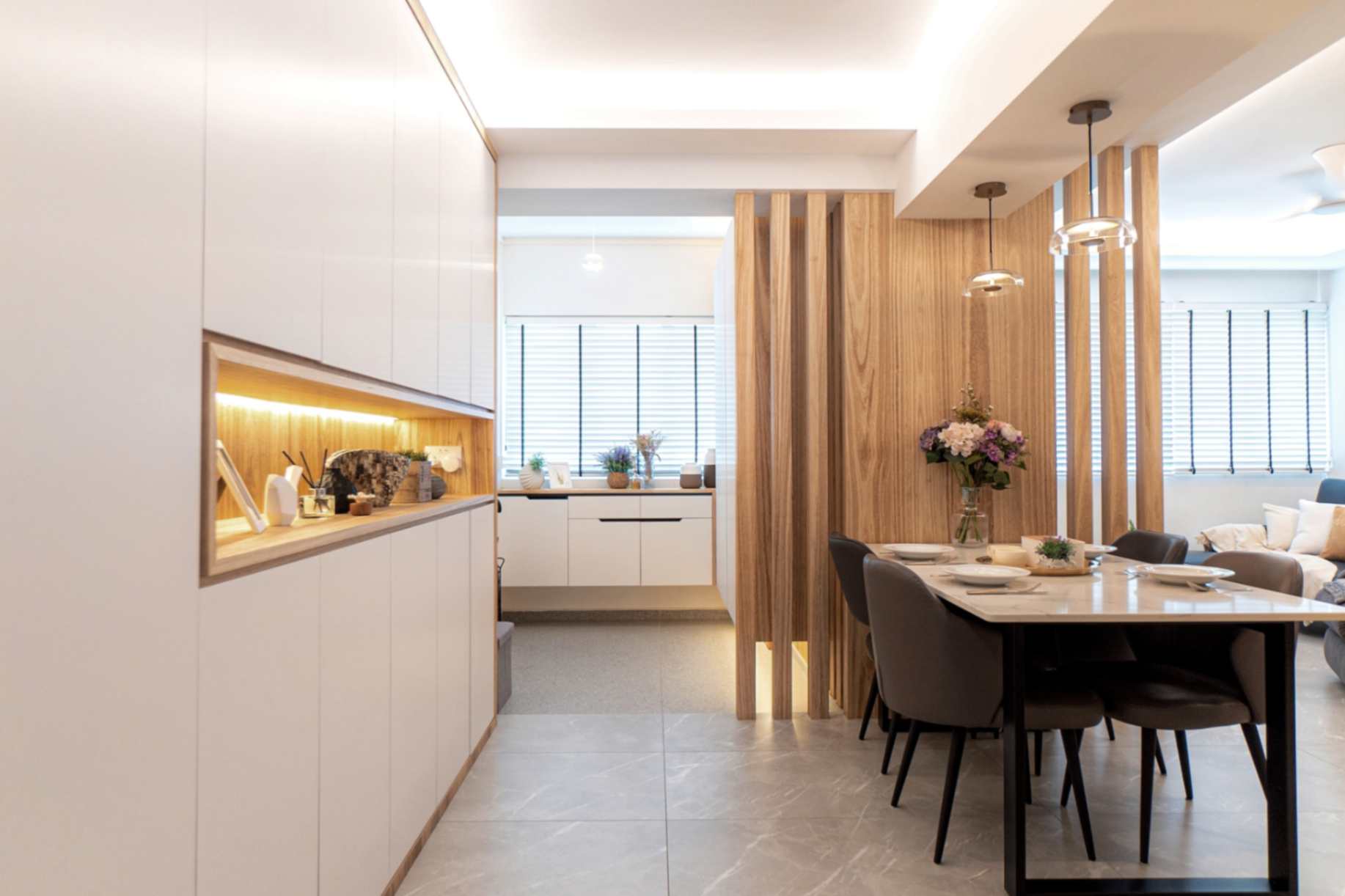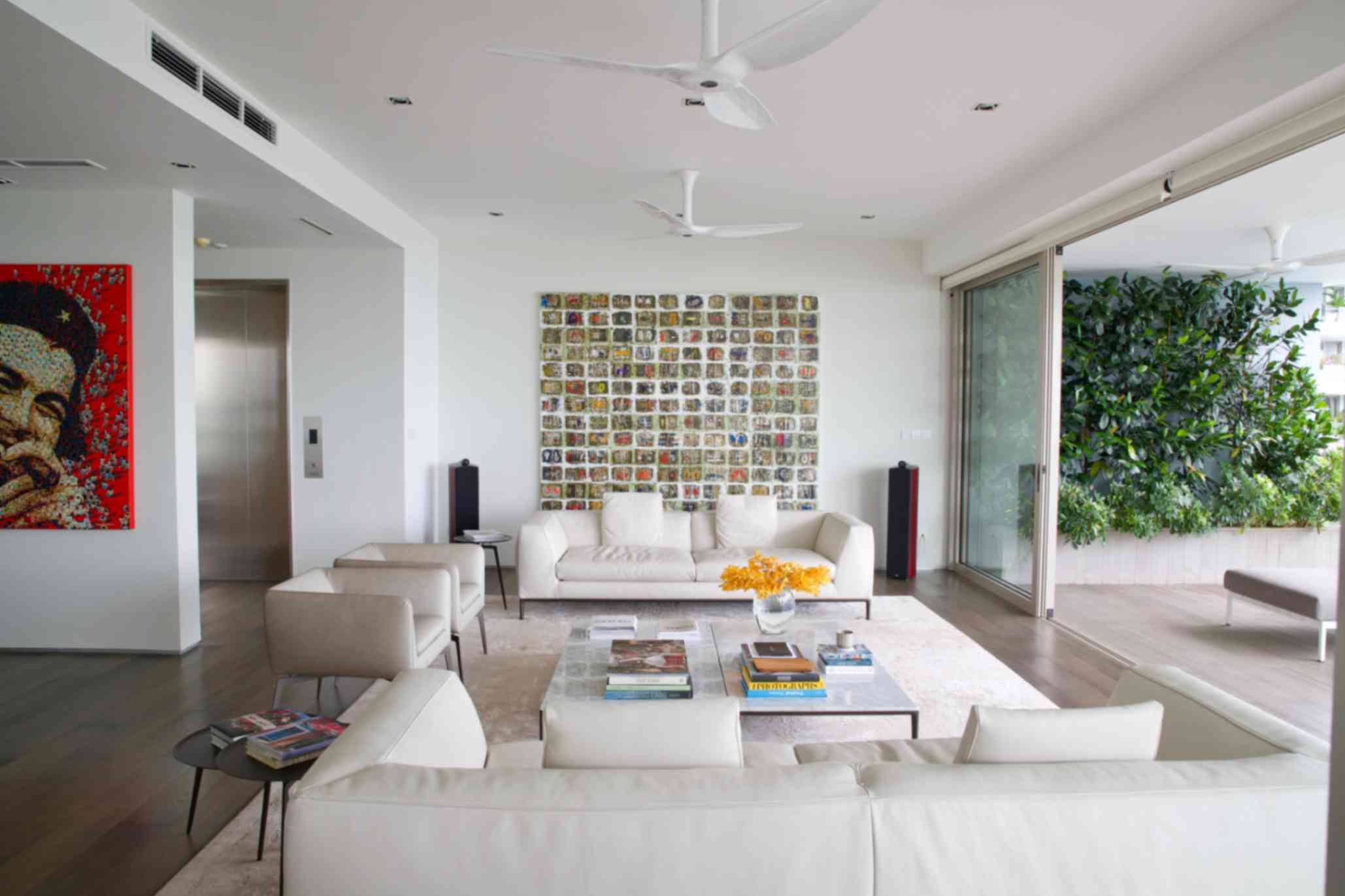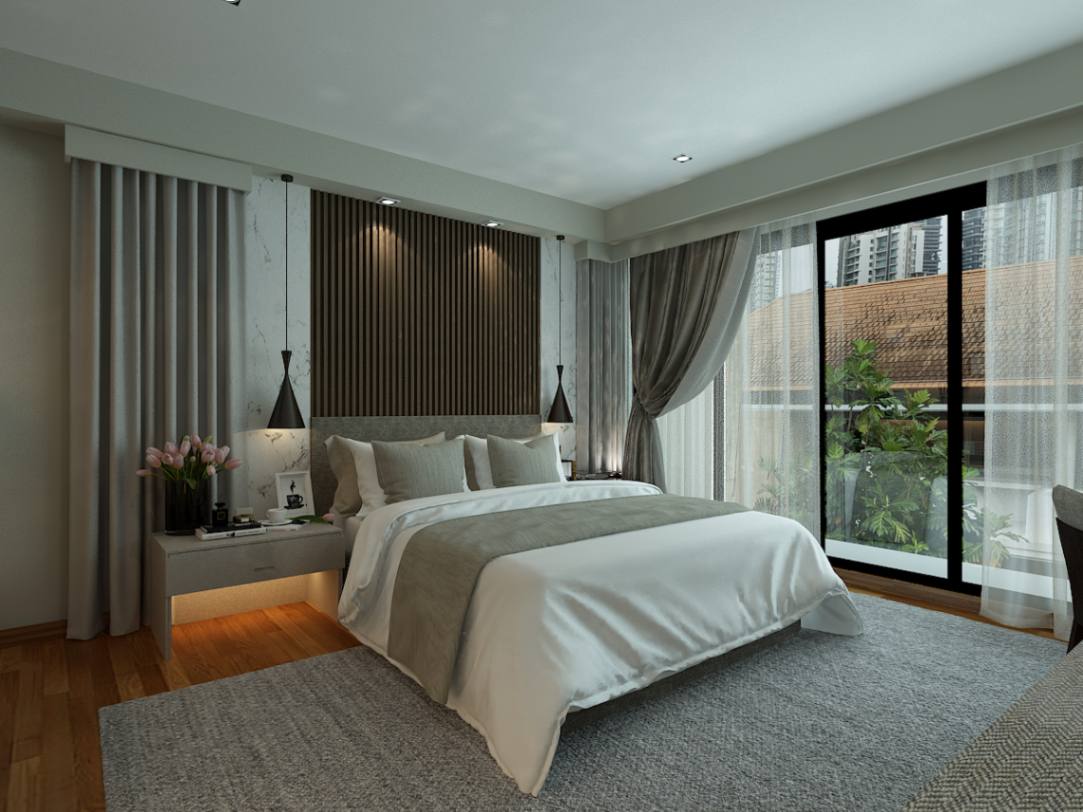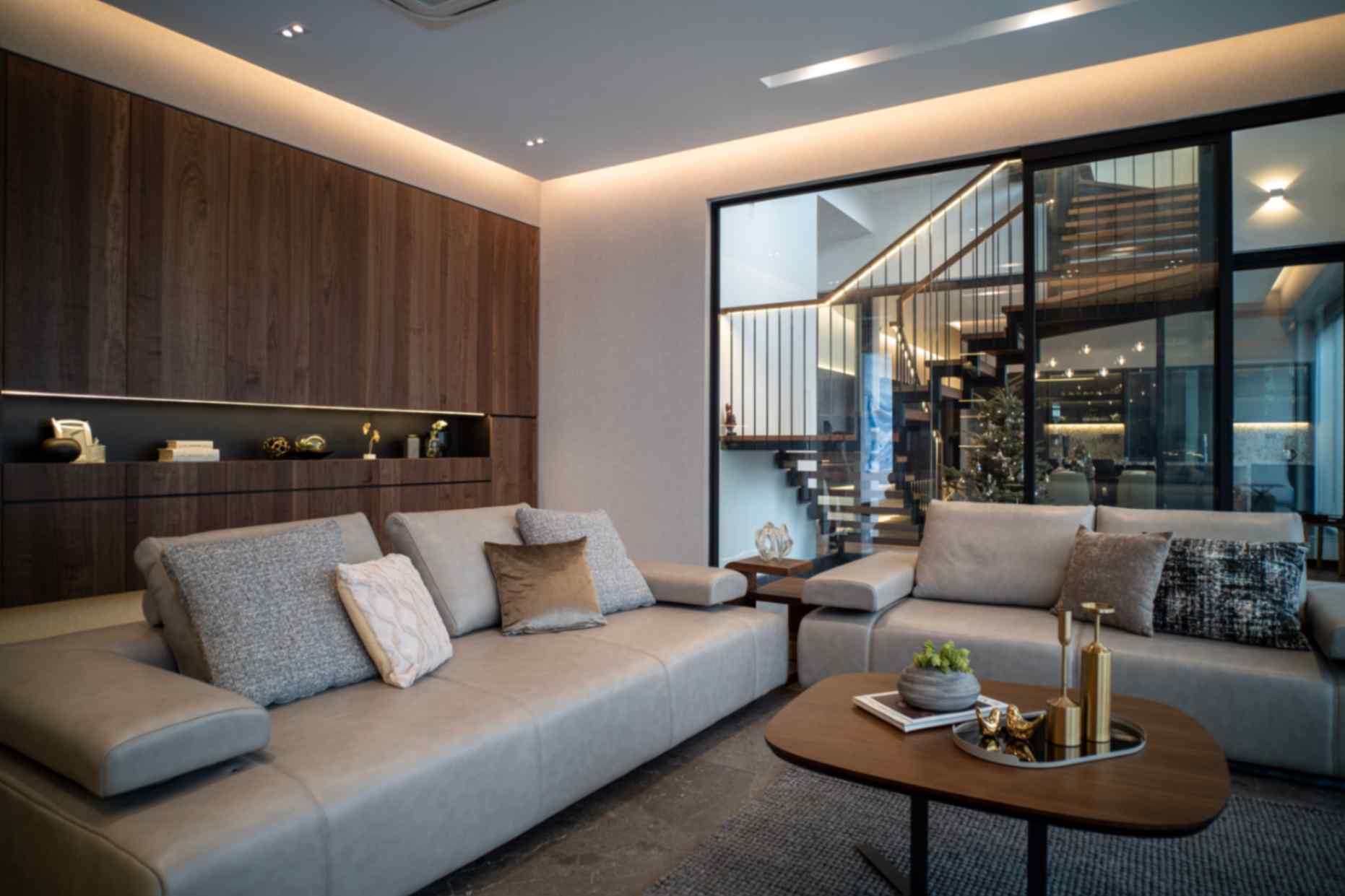A Symphony of Styles- Exploring Contemporary, Scandinavian, and Art Deco Interiors
Jconcept | 17 January 2025 | 4 min read
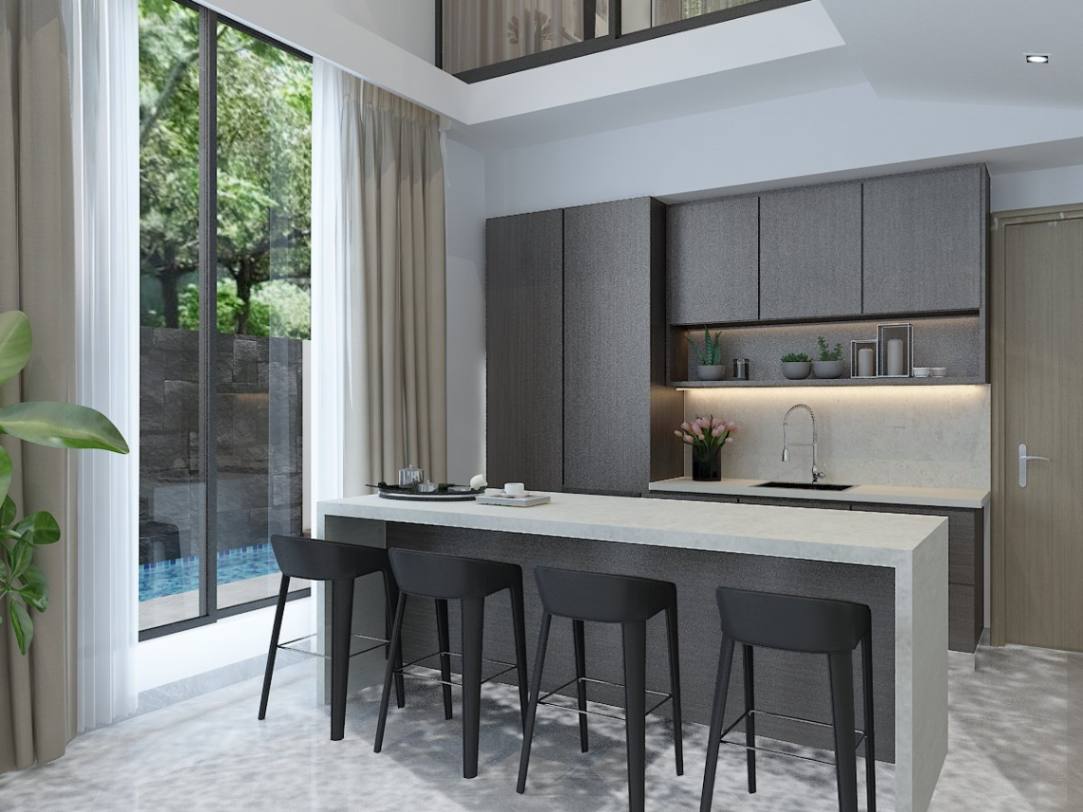
Interior design is a concept that transcends mere aesthetics; it is a symphony of styles that can evoke emotions, create ambiances, and shape the very way we experience our living spaces. The main point is to give each room a distinct personality that resonates with our individual tastes and lifestyles.
Contemporary, Scandinavian, and Art Deco styles have gained immense popularity in recent years, each offering a unique and captivating aesthetic that resonates with diverse tastes and lifestyles. Let’s talk about these three styles in more detail.
Contemporary Interior Design
Contemporary interior design is a style that embraces simplicity, clean lines, and a minimalist approach. Its key characteristics include an open floor plan, neutral colour palettes, and a focus on functionality and comfort. Contemporary interiors often blend modern and traditional elements, creating a harmonious fusion of old and new.
The colour palette in contemporary design typically features shades of white, gray, and beige, accented with pops of bold hues. Natural materials like wood, stone, and metal are commonly used, lending an organic and earthy feel to the space. Furniture pieces are sleek and streamlined, featuring clean lines and geometric shapes.
Contemporary interiors seamlessly blend modern and traditional elements, creating a unique and sophisticated aesthetic. Traditional elements like ornate light fixtures or antique pieces can be incorporated to add warmth and character, while modern elements like stainless steel appliances or minimalist furniture provide a fresh and updated look. The result is a balanced and inviting space that celebrates both the past and the present.
Scandinavian Interior Design
Scandinavian interior design, originating from the Nordic countries of Sweden, Denmark, and Norway, is a style that emphasises functionality, simplicity, and a connection with nature. Its core principles revolve around minimalism, clean lines, and the use of natural materials.
The colour palette in Scandinavian design is typically muted and understated, featuring shades of white, grey, and light wood tones. These neutral hues create a calming and serene atmosphere, while allowing natural light to play a prominent role in the space. Pops of colour, often inspired by nature, such as soft blues, greens, or yellows, are used sparingly as accents.
Natural materials like wood, stone, and wool are heavily incorporated into Scandinavian interiors. Wood, particularly light-coloured varieties like oak, ash, and pine, is a staple element used for flooring, furniture, and accent pieces. Stone, such as slate or granite, is commonly used for fireplace surrounds or countertops, adding texture and warmth to the space.
Furniture choices in Scandinavian design are characterised by simplicity and functionality. Clean lines, minimalist designs, and a focus on comfort are hallmarks of this style. Pieces often feature natural materials like wood or leather, and are designed to be both aesthetically pleasing and practical. Iconic Scandinavian furniture designs, such as the Egg Chair by Arne Jacobsen or the Wishbone Chair by Hans J. Wegner, exemplify the harmonious blend of form and function.
Art Deco Interior Design
Art Deco, a style that emerged in the 1920s and 1930s, was a celebration of modernity, luxury, and technological progress. Originating in France, it quickly spread across Europe and North America, influencing architecture, interior design, fashion, and the arts.
At its core, Art Deco embraced geometric shapes, symmetry, and bold patterns. Zigzags, chevrons, and sunbursts were prominent motifs, creating a sense of movement and energy. Rich colours like deep reds, emerald greens, and vibrant yellows were favoured, often paired with metallic accents like gold or chrome.
Luxurious materials were a hallmark of Art Deco interiors. Exotic woods like ebony and macassar were used for furniture and panelling, while marble, glass, and mirrored surfaces added depth and opulence. Lacquered finishes and intricate inlays further elevated the sense of luxury.
To incorporate Art Deco elements into modern homes, consider adding geometric patterns through wallpapers, rugs, or statement furniture pieces. Incorporate metallic accents through lighting fixtures, mirrors, or home decorative objects. Opt for rich, jewel-toned colours in upholstery or accent walls. Incorporate luxurious materials like marble or glass for surfaces or decor items. Embrace symmetry and balance in furniture arrangement and home accessories placement. By blending Art Deco’s bold geometry, rich colours, and opulent materials with contemporary design elements, you can create a space that exudes sophistication and timeless glamour.
Blending Styles
Combining Contemporary, Scandinavian, and Art Deco interior design styles can create a harmonious and visually captivating space that blends the best of these distinct aesthetics. The key lies in finding a balance between the clean lines and minimalism of Scandinavian design, the bold geometry and opulence of Art Deco, and the sleek modernity of Contemporary styles.
One approach is to use Scandinavian design as the foundation, incorporating its simplicity and emphasis on natural materials. This can be achieved through the use of light wood tones, neutral colour palettes, and minimalist furniture pieces. Then, layer in Art Deco elements to add a touch of glamour and sophistication. Geometric patterns, metallic accents, and luxurious materials like marble or mirrored surfaces can be strategically incorporated through accent walls, statement lighting fixtures, or decorative objects.
Contemporary design can serve as the bridge between these two styles, providing a modern and streamlined aesthetic. Clean lines, open spaces, and a focus on functionality can harmonise the warmth of Scandinavian design with the boldness of Art Deco elements. Incorporate contemporary furniture pieces with sleek silhouettes, and balance the opulence of Art Deco with the simplicity of Scandinavian design.
By carefully curating the elements from each style, you can create a space that exudes warmth, sophistication, and modernity. The key is to maintain a cohesive colour palette, consistent material choices, and a balanced blend of textures and patterns. This fusion of styles can result in a unique and visually striking interior that celebrates the best of each design philosophy while creating a harmonious and inviting living space.
Conclusion
No matter what type of interior design style you gravitate towards, the fusion of Contemporary, Scandinavian, and Art Deco elements can create a truly unique and captivating space. By embracing the clean lines and minimalism of Scandinavian design, the bold geometry and opulence of Art Deco, and the sleek modernity of Contemporary styles, you can curate a living environment that reflects your personal taste and lifestyle.
Remember, the key to successfully blending these styles is to maintain a cohesive colour palette, consistent material choices, and a balanced blend of textures and patterns. With a thoughtful approach, you can create a space that exudes warmth, sophistication, and modernity, while celebrating the best of each design philosophy.
Let’s make your dream home come true! Our team of experts here at JConcepts are dedicated to helping you create a space that reflects your unique style and personality. Whether you’re looking to incorporate a touch of Scandinavian warmth, the glamour of Art Deco, or the sleek modernity of Contemporary design, we have the knowledge and expertise to bring your vision to life.

